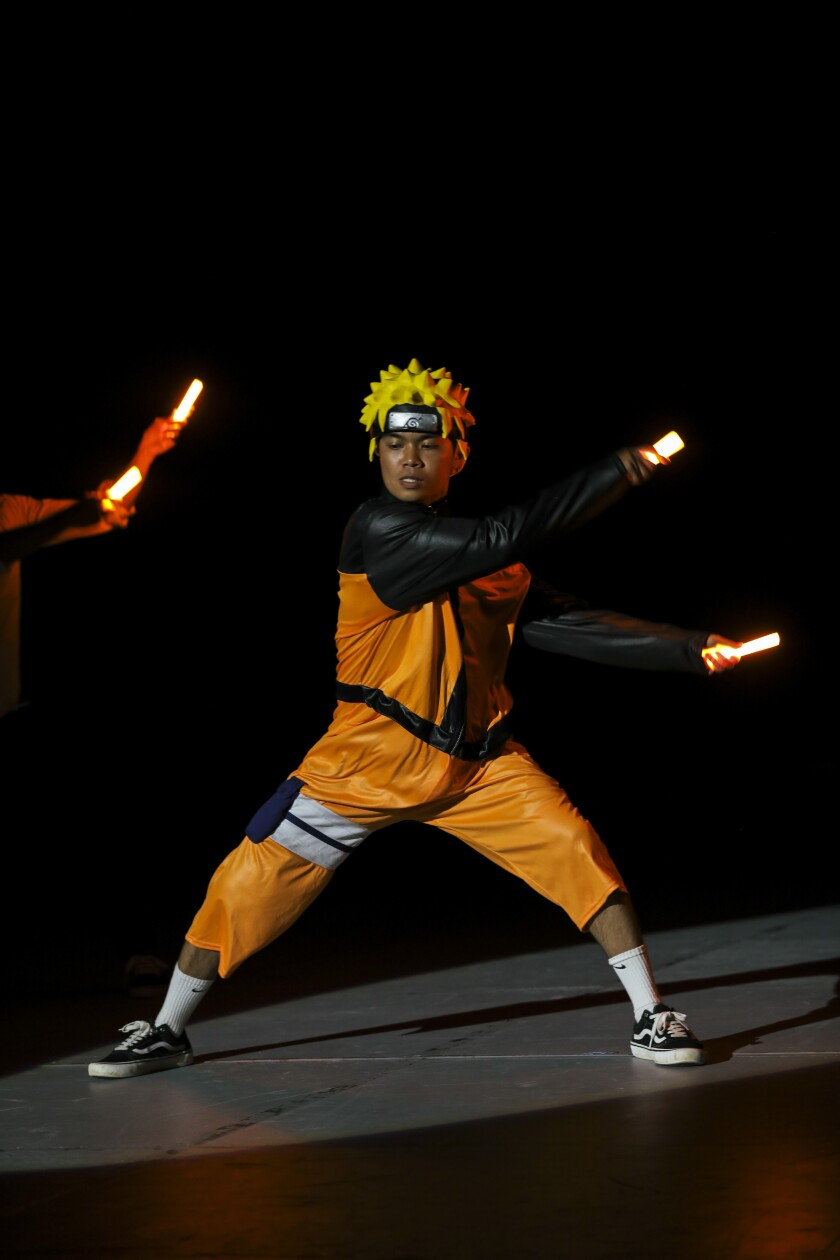Japan Club Culture Night committee members explain the significance of their costumes

Samuel Nagahama, a junior from Japan majoring in biology and one of Japan Club’s Culture Night committee members, said the club’s performance was divided into three parts: modern anime, lighting and traditional dance. He explained each dance was performed with a different song and costume.
Modern anime
The first part of the performance was the modern anime dance, said Reika Iwano, a junior from Japan studying elementary education, who was in charge of this section. Iwano explained people who participated in the modern anime section wore the uniform of anime characters from the anime “Attack on Titan.” She said all characters from this anime wore military uniforms with a jacket and belt on their waist and legs.

Wotagei
Yuji Hyodo, a senior from Japan majoring in hospitality and tourism management, said the second dance, known as Wotagei, is a modern dance from the southern Japanese culture. This was performed in the dark with light sticks, he said.
“Our costume is simple. [We wore a] white shirt and black pants,” said Hyodo, the leader of the second dance. He explained performers wore white shirts so the audience can see the performer’s body movements while dancing in the dark. Iwano added some of the performers also wore Japanese costumes with a traditional pattern called Ichimatsu Moyou during the Wotagei dance.

Sōran Bushi
Nagahama said he was responsible for the movements and arrangements of the third dance in the club’s performance, a traditional fisherman dance known as Sōran Bushi. Nagahama said those who performed this dance wore Japanese headbands with the Happi costume which Iwano explained is typically worn during Japanese festivals. He said their Happi for Culture Night was a black and red coat.
In the traditional dance, Nagahama explained, “It’s all about the fishermen in one of the islands of Japan. So, all the [movements are] pulling the nets, trying to grab a basket full of fishes. You will see a lot of those powerful moves.”
He added the costumes for the last dance will be related to fishermen. Nagahama said the headband represents the people’s hardworking labor that causes them to sweat. So they wear a headband to prevent the sweat from getting in their eyes.
